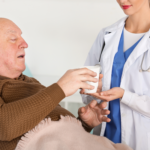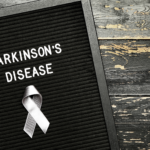 More than 10 million people around the world have been diagnosed with Parkinson’s disease, including one million in the United States. An average of 60,000 are diagnosed with PD every year, and many more are living with the devastating neurological disease without knowing it.
More than 10 million people around the world have been diagnosed with Parkinson’s disease, including one million in the United States. An average of 60,000 are diagnosed with PD every year, and many more are living with the devastating neurological disease without knowing it.
With numbers like these, it’s likely you or someone you love has been impacted by Parkinson’s disease in one way or another. Or perhaps you’ve heard of the disease through the efforts of people like Michael J. Fox, who has dedicated his life to promoting Parkinson’s disease awareness and research.
Parkinson’s disease is a neurological disease which disrupts the signals in the brain. It is most recognized by its motor symptoms—specifically involuntary movements, shaking, stiffness or slowness. But research has shown that Parkinson’s disease also carries with it a bevy of non-motor symptoms, which, though not as noticeable, are just as debilitating. Non-motor symptoms are the traits of the disease that don’t involve movement, and don’t manifest physically.
“Because PD is known as a movement disorder, the non-motor symptoms can often be overlooked,” said Leslie Chambers, President and CEO of the American Parkinson Disease Association, “yet there are several common PD symptoms that do not primarily involve movement. If you, or someone in your life has PD, it is important to be aware of the non-motor symptoms as these can greatly affect quality of life, but if addressed early can often be treated and minimized.”
Read more about what the APDA has to say about Parkinson’s disease non-motor symptoms here.
Living with Non-Motor Symptoms?
Here’s a closer look at the non-motor symptoms of Parkinson’s disease:
- Depression. Some people with Parkinson’s report a rise in depression, which is a sign of chemical changes in the brain due to the disease, and not necessarily a response to outside factors.
- Anxiety. Likewise, levels of anxiety—feelings of helplessness or worry—can increase with the presence of Parkinson’s disease.
- Cognitive changes. People with Parkinson’s can have a hard time paying attention or focusing on future plans. They can also have a hard time remembering things.
- Hallucinations and delusions. A very scary symptom of Parkinson’s, hallucinations and delusions can cause people with Parkinson’s to behave erratically or display paranoia.
- Loss of senses. Since Parkinson’s disease affects the neural connections in the brain, sometimes people with Parkinson’s report loss of taste, smell or even vision in varying degrees.
- Pain. Though related to motor symptoms, pain is considered a non-motor symptom because it is largely unseen. Pain can exist in the joints, head or in the bones of people with Parkinson’s.
- Sleep disorders. Insomnia, restless sleep and other sleep disorders are more unfortunate non-m
otor symptoms of Parkinson’s disease. - Sexual problems. People with Parkinson’s can experience erectile dysfunction and other problems that can disrupt their sexual activity.
Those are just a few of the more common non-motor symptoms of Parkinson’s disease. There are more.
It’s important to get a comprehensive view of both the motor and non-motor symptoms of Parkinson’s disease for a few different reasons.
- Knowing the non-motor symptoms of Parkinson’s disease can help medical professionals and patients diagnose the disease quickly and early, which can help treatment efforts tremendously.
- A correct understanding of non-motor symptoms can help people with Parkinson’s deal with their disease better and be a little more forgiving.
- Caregivers, family, and friends will benefit from knowing the non-motor symptoms of Parkinson’s disease by offering the right kind of assistance in the right ways, knowing that the person they love and care for is experiencing some major changes.
Non-motor symptoms are devastating and debilitating, and unfortunately most Parkinson’s disease treatments are focused on motor symptoms. There is a great need in the medical community for solutions and treatments for non-motor symptoms.
Moving Forward
PhotoPharmics is pioneering the use of phototherapy (or light therapy) to treat the non-motor symptoms of Parkinson’s disease. Our proprietary medical device was given breakthrough designation by the FDA and is entering phase 3 clinical trials this year.
To learn more about what PhotoPharmics is doing to help people with Parkinson’s, visit PhotoPharmics.com or sign up to keep in touch at PhotoPharmics.com/connect.





